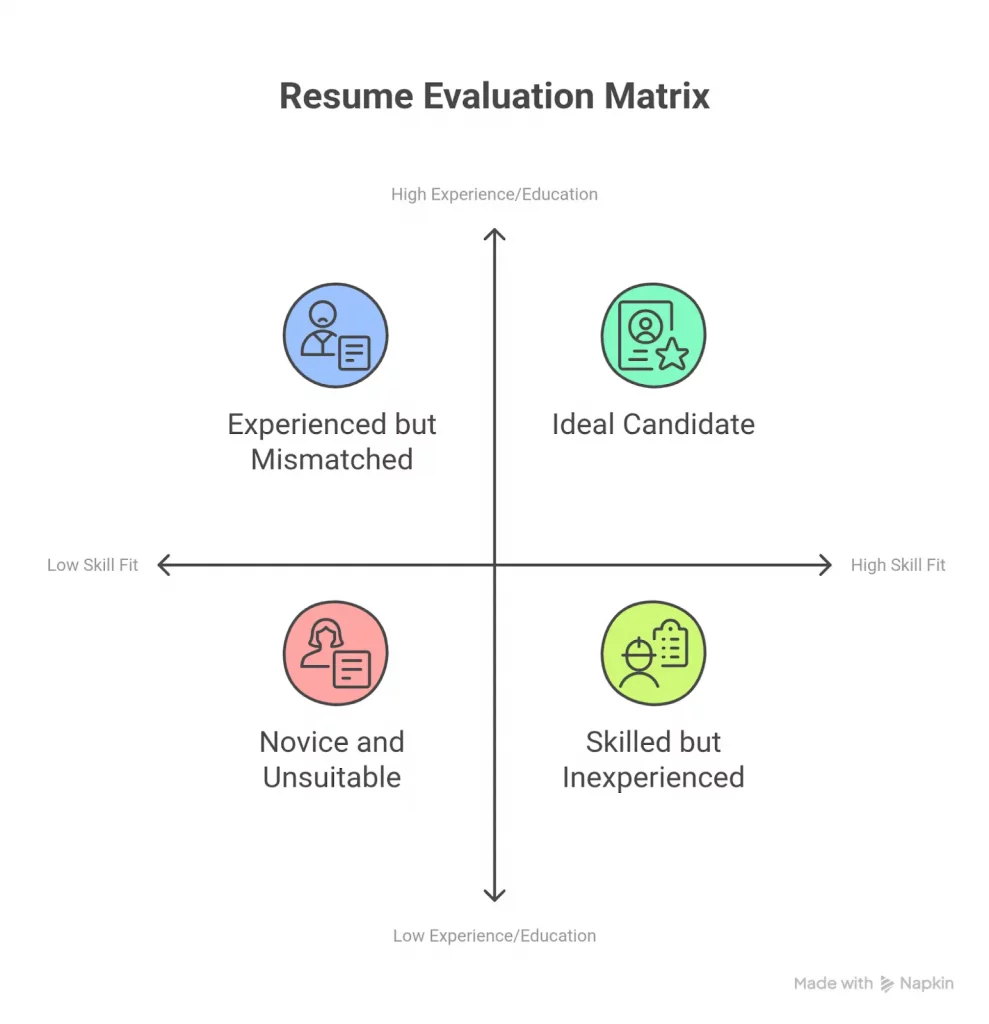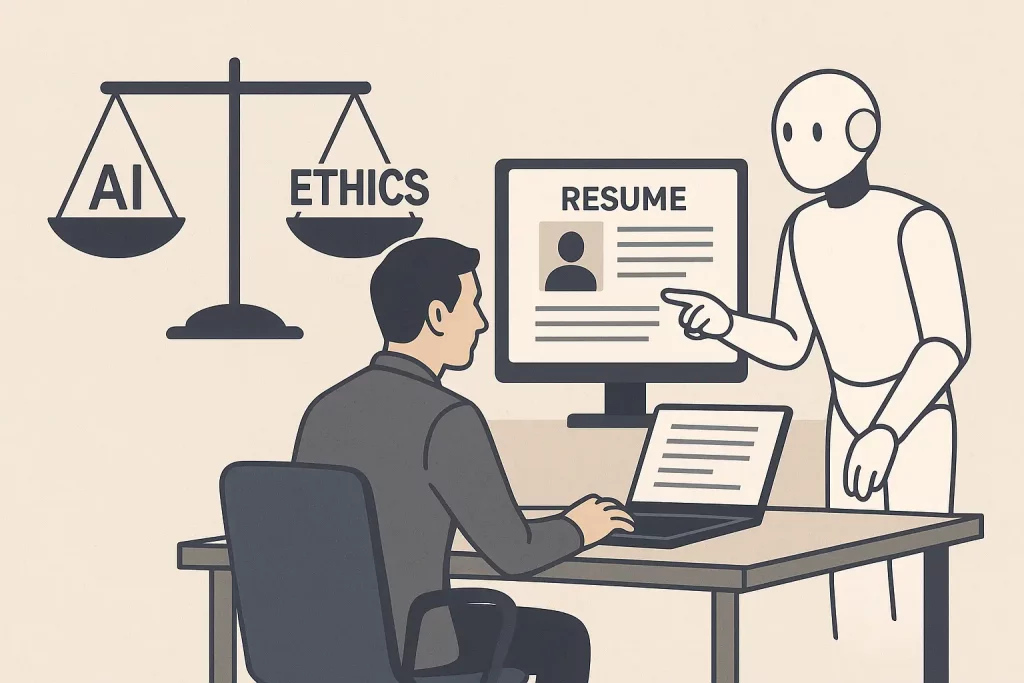Going through resumes is both necessary and often the most challenging aspect of finding a good hire. Recruiting for a role when dozens to hundreds apply can be difficult. Mistakes can happen, causing the workforce to be treated differently or unfairly.
As a result, many recruiters and hiring teams rely on AI tools for assistance. ChatGPT stands out today among AI tools for being able to help with tasks such as studying applications and scoring potential candidates according to a job description.
ChatGPT Course for Professionals
Level up your career with our ChatGPT Course for Professionals. Master AI skills to enhance productivity, problem-solving, and innovation in your field.
In this article, you will learn how to use ChatGPT to streamline and improve your resume screenings. We’ll discuss the ways to get your documents together, develop clear questions, and make use of the AI’s suggestions to choose capable candidates.
Regardless of your HR team size, these tips, alongside the growing role of AI software in human resource management, can help ensure your hiring process goes more smoothly and with less stress.
Why Use ChatGPT to Review and Shortlist Resumes?
Sorting through resumes takes time, and it can be even slower when you have many people to look over. ChatGPT makes it easier and quicker to go through the first steps of finding great candidates so that you can focus on the most promising ones earlier on.
One of the biggest advantages is that things get done and finished much more quickly. ChatGPT can go through many resumes quickly, probably much faster than a person could do it when reading them one by one. It also offers scalability, which means you don’t have to hire more people just because your website suddenly gets much more traffic.
Another benefit is customization. You can tweak your questions to fit the skills you need for software engineers, marketing managers, or customer service people. So, the virtual assistant can participate in various jobs and tasks.
While it’s not a perfect way to get rid of bias, ChatGPT can help lower unconscious bias by looking at resumes using set rules instead of relying on someone’s first impression.
Popular use cases include:
- Early-stage filtering based on must-have qualifications
- Cover letter reviews for tone and relevance.
- Scoring resumes for role-fit based on predefined rubrics
These capabilities align well with tools designed for modern HR professionals. If you're new to using AI in talent acquisition, you might find the free ChatGPT for HR course a helpful starting point.
Preparing to Use ChatGPT for Screening
There are some essential things to do before starting with ChatGPT in your hiring workflow. Taking a bit of time to get ready in advance results in more reliable, constant, and practical outcomes.
- Start by gathering the key materials:
- A clear and detailed job description, ideally with must-have and nice-to-have criteria listed
- A batch of resumes, preferably in text-friendly formats like PDF, Word, or plain text
- Next, define what you’re looking for. ChatGPT works best when you give it specific evaluation criteria. This might include:
- Required skills and tools (e.g., Python, Salesforce, Figma)
- Relevant years of experience or types of companies worked at
- Important certifications or degrees
- Keywords that suggest industry or role alignment
- Once that’s in place, decide how you want to use ChatGPT:
- As an advisory assistant, where it reviews resumes and gives feedback you interpret
- Or as a more autonomous screener, giving scores or recommendations you can use directly.
Clear goals and inputs will help ChatGPT give more consistent and helpful responses. Whether you’re aiming for speed, fairness, or better shortlists, good prep ensures the AI works with you, not instead of you.
Crafting the Right Prompts
Asking prompt questions is the main way to get meaningful answers from ChatGPT. If you learn to ask in the right way, the outcome will be better, so it pays to put in the effort.
If you’re trying things out, use a simple prompt.:
“Evaluate this resume for a [Job Title] role. Identify relevant skills, experience, and education.”
This will give you a general summary, but to make ChatGPT more effective and consistent, you’ll want to get more specific.
Advanced prompt tactics can turn ChatGPT into a structured screening assistant:
- Use a scoring system:
“Rate this candidate from 1 to 5 on job fit based on required skills: Excel, project management, and data analysis.”
- Request a summary:
“List this candidate’s top 3 strengths and any red flags based on the job description.”
- Structure the output for easier comparison:
“Respond in bullet points with categories for Skills Match, Experience Level, and Overall Fit.”
Prompt-writing tips:
- Be clear and specific. Vague prompts lead to vague answers.
- Break complex asks into steps. Instead of one long prompt, consider doing it in parts (e.g., first check skills, then assess experience).
- Include the job description or criteria directly in the prompt when possible, so the AI has context.
- If screening multiple resumes, use a standardized format so responses are easier to compare.
The more structure and clarity you give, the better the output. Think of your prompt as the instructions you’d give a junior recruiter: clear, detailed, and focused on what matters most.
Learning how to ask the right questions is crucial. You can build stronger prompts through structured learning. Consider exploring this free Prompt Engineering for ChatGPT course to improve your results.
Tip: If you're interested in structured learning paths, consider exploring Academy Pro, our new subscription that gives you access to all premium courses at just ₹999/month. It’s a cost-effective way to upskill across AI, recruiting tools, automation, and more.
Running the Screening Process

After you have settled on your prompts and found the right materials, the next thing to do is take action. How the process is carried out will depend on how much control you want to exercise over the process.
Getting Resumes into the System
If you’re working manually, you can simply copy and paste resumes into ChatGPT along with the job description and your prompt. Converting resumes into plain text (from PDFs or Word docs) usually works best.
If formatting is messy, a quick clean-up or using a resume parser can help make things more straightforward for the AI to read.
Adding Automation
When handling more resumes, it makes sense to automate. Here are a few options:
- Spreadsheets: Tools like Google Sheets can work well for organizing resumes and even running evaluations with connected plugins.
- No-code tools: Platforms like Zapier or Make.com can link your email, database, or applicant tracking system (ATS) to ChatGPT for smoother input and output.
- Custom workflows: With developer support, you can connect ChatGPT to your internal systems through an API for end-to-end automation.
For professionals looking to integrate ChatGPT into broader workflows and productivity systems, the ChatGPT for Working Professionals course covers these applications in more depth.
A Sample Workflow
- Share the job description with ChatGPT first to set the context.
- Add resumes one at a time, using a consistent prompt for each.
- Save the feedback in a table or sheet, with columns for skills, experience, and overall fit.
This method keeps the process organized and helps you compare candidates more easily, all while saving time.
Sample Prompts
Use these as starting points and adjust based on the role:
- Basic Fit Check:
“Evaluate this resume for a [Job Title] position. Identify relevant skills, experience, and education. Give a brief summary of fit.” - Scoring Prompt:
“Based on the following job description, score this candidate from 1–5 in these areas: Required Skills, Industry Experience, Education Fit. Provide brief notes for each score.” - Strengths & Weaknesses:
“List the top 3 strengths and any potential concerns based on the resume and job description.”
Resume Scoring Rubric (Example)
| Category | Score (1–5) | Notes |
| Technical Skills | ||
| Industry Experience | ||
| Communication | ||
| Education & Training | ||
| Overall Fit |
Tool Recommendations
- Zapier / Make.com: Automate resume collection and send data to ChatGPT
- Airtable: Use as a lightweight ATS to manage candidate data and ChatGPT outputs
- Google Sheets + GPT Add-ons: Great for running batch evaluations directly in a spreadsheet
You can build a scalable, semi-automated hiring assistant tailored to your team’s needs with the right setup.
Interpreting and Refining Results
After ChatGPT has reviewed a batch of resumes, take time to go over the results with a critical eye. Look beyond just the scores, pay attention to the reasoning behind them.
Summaries and bullet points can reveal helpful patterns but might also highlight inconsistencies.
It’s a good idea to cross-check evaluations across multiple candidates. Is the scoring fair? Did the AI pick up on the right skills and experience based on your criteria? If something feels off, it probably is.
Remember, ChatGPT doesn’t replace human judgment, it supplements it. If a promising candidate is rated low for formatting or missing keywords, give their resume a second look. On the flip side, don’t blindly trust high scores without context.
Use your experience and instincts to guide final decisions.
As you continue using ChatGPT, tweak your prompts and scoring systems based on what works. The more you refine the process, the better the results will be.
Limitations and Ethical Considerations

While ChatGPT can save time and offer structure, it's important to understand its limits. The model doesn’t “know” the candidate; it’s working from patterns and text. This means there’s always a chance of hallucinations, where it makes incorrect assumptions or fills in details that aren’t in the resume.
Another issue is bias. ChatGPT may reflect societal or dataset-level biases present in the material on which it was trained. It’s essential to stay aware of this, especially when screening candidates from diverse backgrounds.
There’s also the matter of data privacy. Avoid submitting personal or sensitive information unless you use ChatGPT in a secure, compliant environment. Store and handle resumes carefully, just as you would with any hiring tool.
In short, ChatGPT should be treated as a helpful assistant, not a final decision-maker. Keep humans in the loop, especially when fairness, judgment, and context are essential.
For a deeper understanding of the broader implications, risks, and applications of generative AI in enterprise settings, the Master Generative AI course offers comprehensive insights.
Conclusion
ChatGPT can be a powerful ally in the resume screening process, helping you save time, stay organized, and make more informed decisions early in the hiring funnel. With the right prompts and clear evaluation criteria, it can quickly highlight strong candidates and flag potential concerns.
That said, it’s important to remember that ChatGPT is a support tool, not a substitute for human judgment. Its feedback should guide your decisions, not replace them.
The key to success lies in experimentation. Try different prompt styles, refine your scoring approach, and review outputs critically. Over time, you’ll develop a system that fits your hiring needs and delivers real value.
When used thoughtfully, ChatGPT can help you streamline your workflow and focus more on what matters, such as finding the best people for your team.






